The team at Lancaster has produced a number of games and resources for policymakers, flood risk authorities, insurers, schools and anyone wanting to understand more about flooding. Here you can learn more about how these resources can be used in different settings.
The British Damage Management Association, the certifying body for damage management professionals, has developed two training courses based on our research with flood-affected people:
The courses have been taken so far by more than 500 recovery practitioners and many have said that the training has helped them better understand the needs of those affected by flooding.
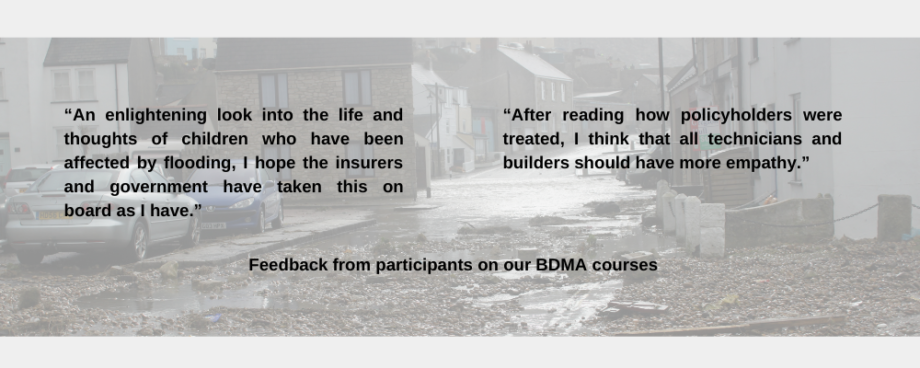
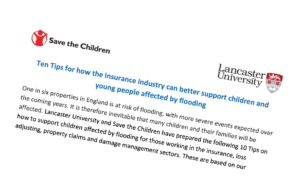
We also worked with the BDMA to create ‘Ten Tips for how the insurance industry can better support children and young people affected by flooding’.
Surrey County Council’s Emergency Management team used our Children’s Flood Manifestos to find new ways to put children and families at the heart of their work. This included:
Working with the Environment Agency we’ve created a public ‘flood archive’ where people can now access our research data and resources. This archive includes guidance we created for flood risk authorities: Working with flood-affected people: a guide for ethical practice.
The Environment Agency also uses digital resources we have developed from flood narratives gathered during our research to run workshops in schools, universities and community settings. These resources include Flood Snakes & Ladders, which invites participants to walk in the shoes of flood-affected children.
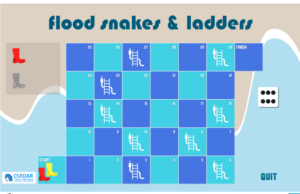
Flood Snakes & Ladders can be used online or in face-to-face settings with adults or young people in a range of contexts including:
Flood Snakes & Ladders is being used in schools by teachers who access it and the related resources via our website. While our games are fun to play, they raise some serious questions about how to prepare for flooding.

Alongside Flood Snakes and Ladders, we’ve produced a digital game for primary pupils called Get Flood Ready! that aims to promote flood awareness in children and families. The game, which can be run in groups of 2-4 or as a whole class, takes children on a flood journey, highlighting some of the challenges along the way and there are Teacher Notes to help staff running the activity in school.
Our team has also developed a resource specifically for flood-affected children and young people. The ‘Flood Suitcase’ workshop programme is based on the creative, participatory methods we used in our research with children, including walking and taking photographs around the flood-affected area, drama and model-making. These methods can help children to share their experiences of and ideas about flooding in a safe and supported way.
At the end of the programme, schools get their own Flood Suitcase where they can store materials generated during the workshops that evoke memories of the flood and the recovery process. The Suitcase also provides a focus for discussing flooding in school and opening a dialogue about community flood awareness and resilience building.
Following Storm Desmond in 2015, we ran the Flood Suitcase programme with flood-affected children at schools in Lancashire and Cumbria. As part of this, we trained staff from Barnardo’s who went on to run the programme with further schools.
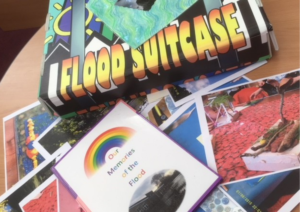
Children’s feedback on the Flood Suitcase Programme:
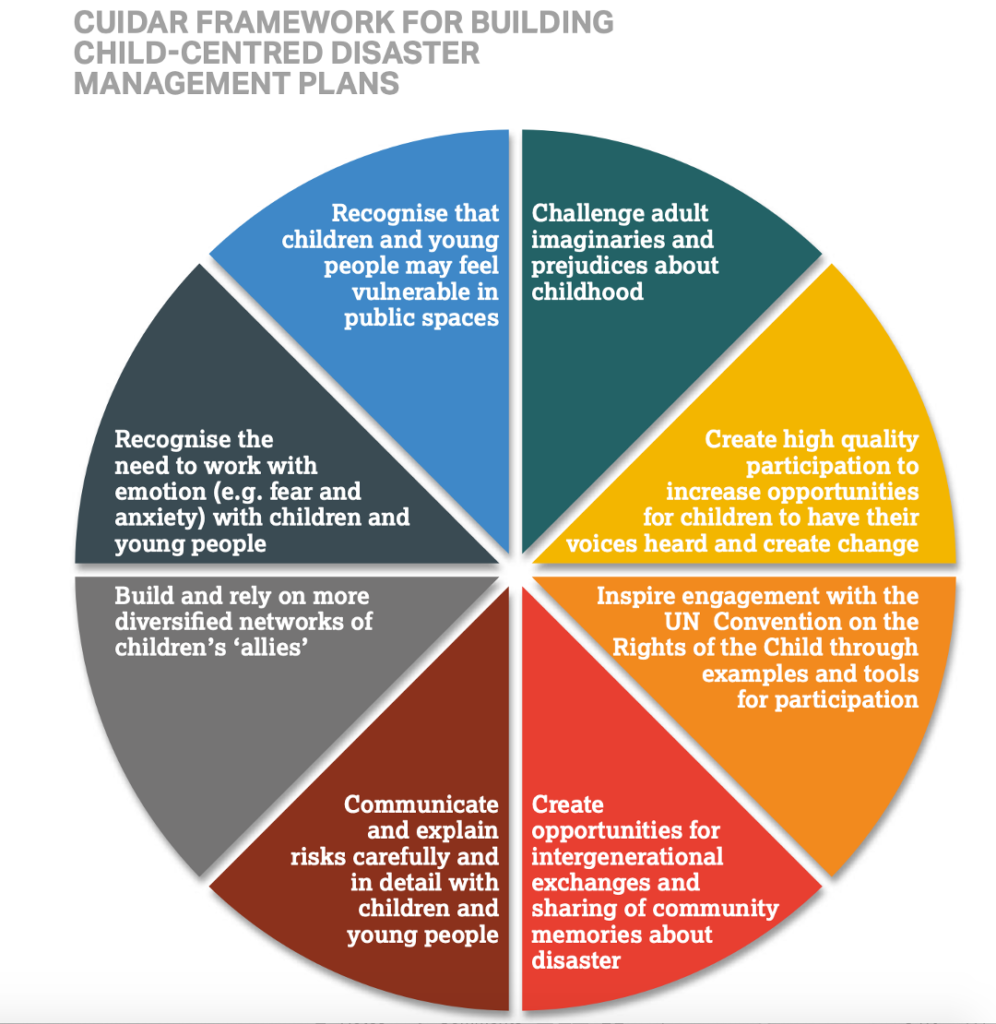
Our team created a European Framework for Child-centred Disaster Risk Management, which has been used to help authorities across Europe make clearer, child-friendly plans for living with all kinds of risks.
These include:
See in our film how we worked with young people across Europe and hear their ideas about living with many kinds of risks: